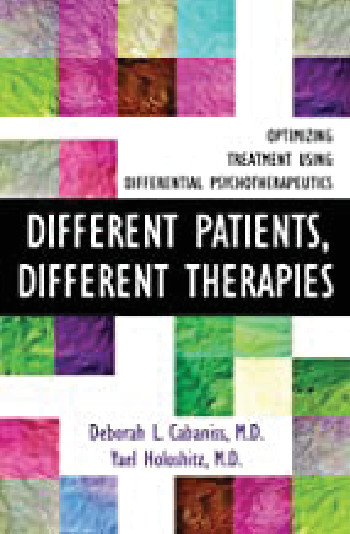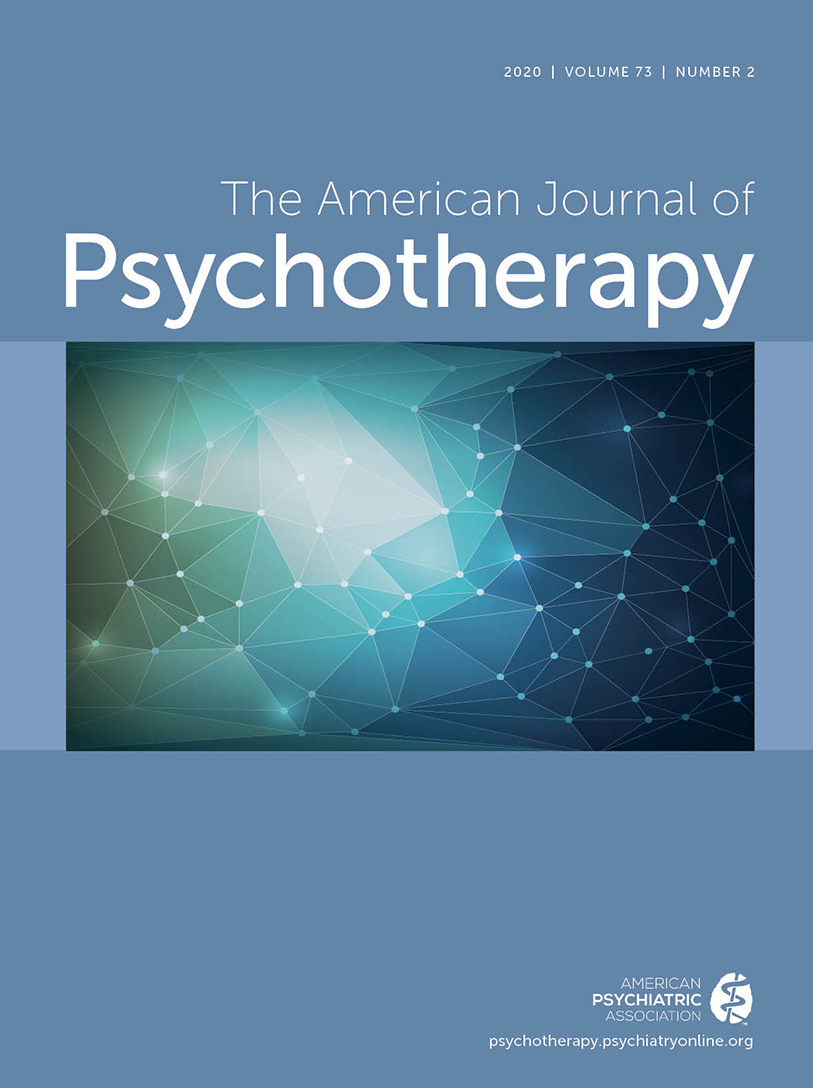Clinicians have moved well beyond a one-size-fits-all approach in the practice of psychotherapy. Few practitioners these days would presume that all psychiatric patients are best treated with the same psychotherapeutic modality (e.g., psychodynamic psychotherapy or cognitive-behavioral therapy). However, increasingly sophisticated meta-analyses leave many questions unanswered about the comparative effectiveness of various psychotherapies for different psychiatric disorders and psychological problem sets (
1,
2). Few studies elegantly compare different therapies for comparable patient populations in “head-to-head” clinical trials. The more carefully one drills down into the details of psychotherapy studies, the more muddled the findings and the narrower the analysis. Moreover, common factors in psychotherapy (e.g., applying large doses of hope to demoralization; complexities within clinician-patient alliances; patient-specific characteristics, including psychological mindedness and interpersonal intelligence; therapist characteristics; environmental circumstances; and intercurrent life events, among others) probably account for more than half the variance in patient outcomes (
3–
5).
Still, a meaningful amount of psychotherapy outcomes may arguably result from specific techniques and strategies of distinct psychotherapies. Therefore, contemporary mental health practitioners need to be familiar with the buffet of contemporary psychotherapy options and have knowledge of their strengths, weaknesses, and, where information is available, how they stack up against one another and for what sorts of problems. Such information isn’t always easy to come by. Novices as well as mature practitioners find themselves easily confused by “fake psychotherapy news,” hyped by practitioners who hold strong allegiances to certain psychotherapies and sometimes served up with large portions of “lies, damned lies, and statistics.” Furthermore, despite advertised differences, in practice, many of these therapies seem to largely overlap—some as “me-too” treatments—especially when considering how clinicians actually apply these different modalities.
To help perplexed psychotherapy consumers—trainees, practitioners, patients, and payers—begin to untangle these problems, Deborah Cabaniss and Yael Holoshitz have compiled a manual of differential psychotherapeutics.
Different Patients, Different Therapies is a highly readable, well-presented select “psychotherapy formulary” focusing on 23 of the most conventionally practiced psychotherapies. In an index that is far from complete, Wikipedia (
6) lists 190 types of psychotherapies; thus, exactly which psychotherapies to include in the formulary depends on a series of judgment calls. Undoubtedly, many clinicians and patients will be disappointed to find their favorite psychotherapies omitted.
Nevertheless, the therapies selected for this volume span a broad range of the psychotherapy universe: supportive, prescriptive, expressive, and reflective psychotherapies targeting past recollections and reflections, present activities and experiences, and future anxieties and aspirations; psychotherapies emphasizing efforts to change thoughts, emotions, and behaviors; and psychotherapies administered to individuals, couples, families, and groups. In all, 38 expert scholars and practitioners bring their wisdom and perspectives to the book’s presentations and discussions.
First, using a differential psychotherapeutics “cycle,” the authors describe a common framework based on four processes: learning (what therapists practicing each therapy want to know about the patient and how they obtain their information), thinking (conceptualizing and formulating the problems), matching (aligning what has been learned about the patient with best treatments and prioritizing those treatments), and discussing (collaboratively interacting with patients in regard to treatment planning). This framework is then used to succinctly describe the 23 psychotherapies, grouped as cognitive and behavioral therapies, psychodynamic and supportive psychotherapies, interpersonal therapies, family therapies, and value-based and strength-based therapies (roughly four to six pages per psychotherapy). Each psychotherapy is showcased within a highlighted Key Concepts segment, which is followed by sections on the therapy’s background; what it aims to reveal about patients; how the therapy can be used to interpret a patient’s condition and its causes; what in the patient’s thoughts, emotions, and behaviors needs to change; internal and external resources needed for the therapy to work; and typical treatment trajectories and common techniques.
Next, the book cites experts who apply the framework to clinical cases exemplifying common problem areas (not specific DSM-5 diagnoses). A dozen cases are scrutinized by three experts apiece, each of whom describes the application of a suitable modality. For example, the problem area of trauma is paired with eye-movement desensitization and reprocessing, prolonged exposure therapy, and psychodynamic psychotherapy; late-life depression and grief are paired with supportive psychotherapy, complicated grief therapy, and family therapy; and affective dysregulation is paired with psychodynamic psychotherapy, transference-focused psychotherapy, and dialectic behavior therapy. In addition to framework-based considerations, experts also discuss how they think the treatment will proceed.
Written to instruct, this book can serve as the basis of an introductory seminar for psychiatric and other mental health trainees or even as a framework for advanced mental health clinician case-based study groups. A concluding section, Educators’ Guide to Teaching Differential Therapeutics, offers helpful pedagogical principles and worksheets applicable to cases that seminar participants might bring for discussion. Seminar participants might also accept the challenge of comparing the relative pros and cons of these treatments head-to-head for a given patient.
The admittedly restricted group of psychotherapies highlighted in this book represent essential topics for trainees and practitioners. The case-based presentations offer a format suitable for a broad spectrum of aspiring psychotherapists. Educators and their learners will find much of value.


